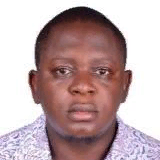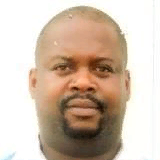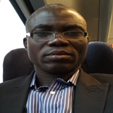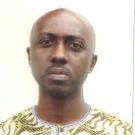International Journal of Engineering and Manufacturing (IJEM)
IJEM Vol. 10, No. 1, 8 Feb. 2020
Cover page and Table of Contents: PDF (size: 285KB)
Absorption, Diffraction and Free Space Path Losses Modeling for the Terahertz Band
Full Text (PDF, 285KB), PP.54-65
Views: 0 Downloads: 0
Author(s)
Index Terms
Terahertz, Absorption loss, Diffraction loss, free path loss, Channel Model
Abstract
With the explosive increase in the data traffic of wireless communication systems and the scarcity of spectrum, terahertz (THz) frequency band is predicted as a hopeful contender to shore up ultra- broadband for the forthcoming beyond fifth generation (5G) communication system. THz frequency band is a bridge between millimeter wave (mmWave) and optical frequency bands. The contribution of this paper is to carry out an in-depth study of the THz channel impairments using mathematical models to evaluate the requirements for designing indoor THz communication systems at 300GHz. Atmospheric absorption loss, diffraction loss and free space path loss were investigated and modeled. Finally, we discuss several potential application scenarios of THz and the essential technical challenges that will be encountered in the future THz communications. Finally, the article finds that propagating in the THz spectrum is strongly dependent on antenna gain.
Cite This Paper
Oluseun.D.Oyeleke, Sadiq Thomas, Olabode Idowu-Bismark, Petrus Nzerem, Idris Muhammad. “Absorption, Diffraction and Free Space Path Losses Modeling for the Terahertz Band", International Journal of Engineering and Manufacturing(IJEM), Vol.10, No.1, pp.54-65, 2020. DOI: 10.5815/ijem.2020.01.05
Reference
[1] O. Idowu-Bismark, F. Idachaba, and A. A. A. Atayero, “A Survey on Traffic Evacuation Techniques in Internet of Things Network Environment,” Indian J. Sci. Technol., vol. 10, no. 33, pp. 1–11, 2017.
[2] O. Idowu-bismark, O. Kennedy, R. Husbands, and M. Adedokun, “5G Wireless Communication Network Architecture and Its Key Enabling Technologies,” vol. 12, no. April, pp. 70–82, 2019.
[3] E. S. Law, “Edholm’s law of bandwidth,” IEEE Spectr., vol. 41, no. 7, no. July, pp. 58–60, 2004.
[4] J. Wu, Y.-L. Shen, K. Reinhardt, H. Szu, and B. Dong, “A Nanotechnology Enhancement to Moore’s Law,” Appl. Comput. Intell. Soft Comput., vol. 2013, pp. 1–13, 2013.
[5] O. B. Idowu-Bismark, A. E. Ibhaze, and A. A. Atayero, “Mimo Optimization Techniques and Their Application in Maximizing Throughput for 3GPP HSPA+,” J. Wirel. Netw. Commun., vol. 7, no. 1, pp. 1–8, 2017.
[6] Z. Chen et al., “A Survey on Terahertz Communications,” China Commun., vol. 16, pp. 1–35, 2018.
[7] A. Moldovan, M. A. Ruder, I. F. Akyildiz, and W. H. Gerstacker, “LOS and NLOS Channel Modeling for Terahertz Wireless Communication with Scattered Rays,” pp. 388–392, 2014.
[8] Z. Miao, S. Member, Z. Hao, S. Member, and Y. Wang, “A 400-GHz High-Gain Quartz-Based Single Layered Folded Reflectarray Antenna for Terahertz Applications,” no. c, 2018.
[9] K. Tsujimura, K. Umebayashi, J. Kokkoniemi, and J. Lethomäki, “A Study on Channel Model for THz Band,” pp. 872–873, 2016.
[10] K. Tsujimura, K. Umebayashi, J. Kokkoniemi, J. Lehtomäki, and Y. Suzuki, “A Causal Channel Model for the Terahertz Band,” IEEE Trans. Terahertz Sci. Technol., vol. 8, no. 1, pp. 52–62, 2018.
[11] S. Nie and I. F. Akyildiz, “Three-Dimensional Dynamic Channel Modeling and Tracking for Terahertz Band Indoor Communications.”
[12] K. Yang, Y. Hao, and A. Alomainy, “Channel Modelling of Human Tissues at Terahertz Band,” 2016 IEEE Wirel. Commun. Netw. Conf. Work., no. ComExCon, pp. 218–221, 2016.
[13] Q. T. Vien, M. O. Agyeman, T. A. Le, and T. Mak, “On the Nanocommunications at THz Band in Graphene-Enabled Wireless Network-on-Chip,” Math. Probl. Eng., vol. 2017, 2017.
[14] J. Kokkoniemi, J. Lehtomäki, and M. Juntti, “A discussion on molecular absorption noise in the terahertz band,” Nano Commun. Netw., vol. 8, pp. 35–45, 2015.
[15] M. . Paridah, A. Moradbak, A. . Mohamed, F. abdulwahab taiwo Owolabi, M. Asniza, and S. H. . Abdul Khalid, “We are IntechOpen , the world ’ s leading publisher of Open Access books Built by scientists , for scientists TOP 1 %,” Intech, vol. i, no. tourism, p. 13, 2016.
[16] S. Shah and M. Ashraf, “Signal Path Loss Measurement for Future Terahertz Wireless Propagation Links,” vol. 5, no. 10, pp. 193–197, 2018.
[17] A. A. Boulogeorgos, E. N. Papasotiriou, J. Kokkoniemi, and J. Lehtom, “Performance Evaluation of THz Wireless Systems Operating in 275 − 400 GHz Band.”
[18] J. Kokkoniemi, P. Rintanen, J. Lehtomäki, and M. Juntti, “Diffraction effects in terahertz band - Measurements and analysis,” 2016 IEEE Glob. Commun. Conf. GLOBECOM 2016 - Proc., 2016.
[19] P. Series, Propagation by diffraction P Series Radiowave propagation, vol. 11. 2009.
[20] Boulogeorgos, A.-A. A., Papasotiriou, E. N., Kokkoniemi, J., Lehtomaeki, J., Alexiou, A., & Juntti, M. (2018). Performance Evaluation of THz Wireless Systems Operating in 275-400 GHz Band. 2018 IEEE 87th Vehicular Technology Conference (VTC Spring). doi: 10.1109/vtcspring.2018.8417891.
[21] Projects. (n.d.). Retrieved from https://unlab.tech/projects/
[22] Minoru Fujishima,Key Technologies for THz Wireless Link by Silicon CMOS Integrated Circuits, Photonics 2018, 5(4), 50; https://doi.org/10.3390/photonics5040050




